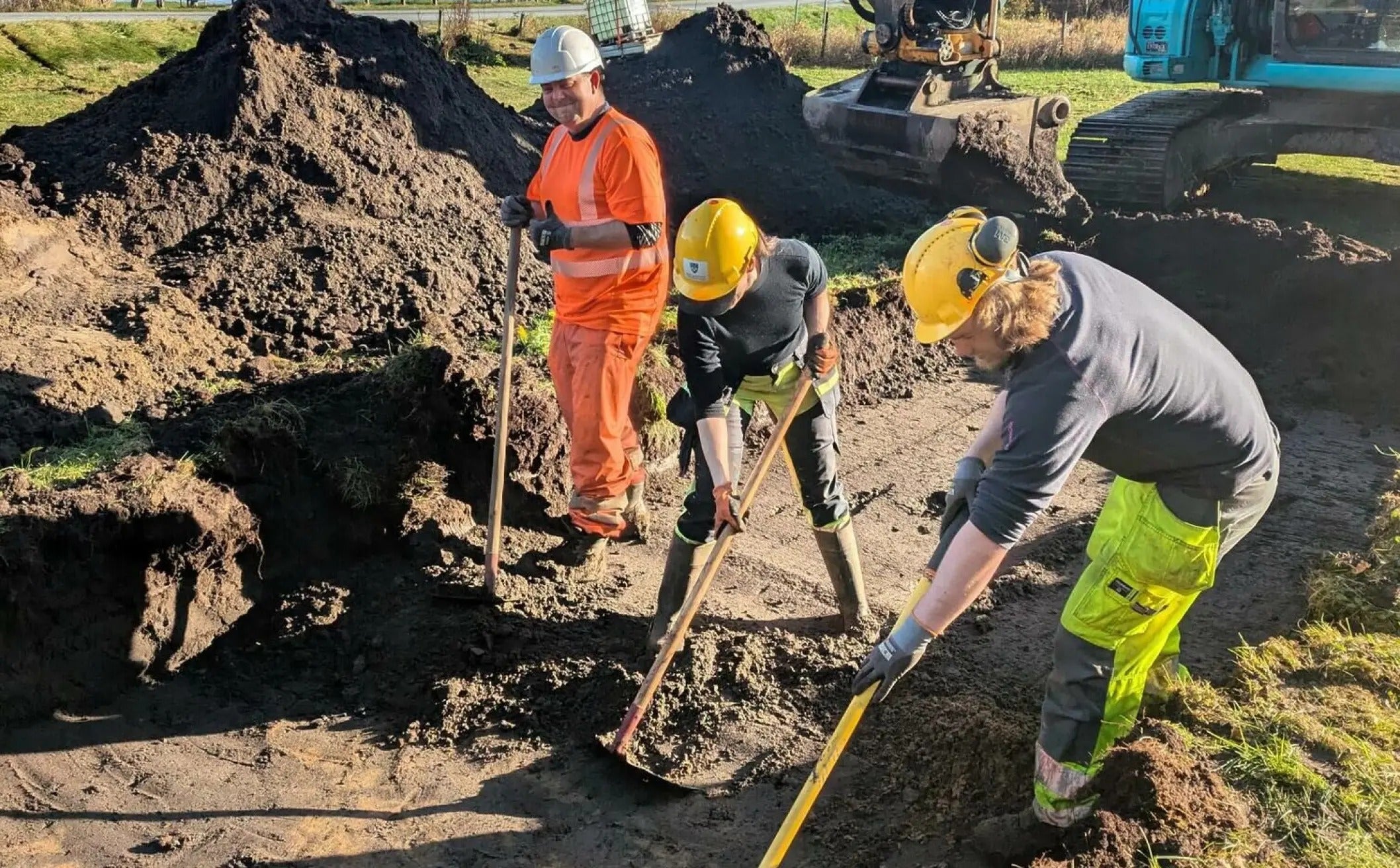
Rune-Inscribed Game Pieces Found in Tønsberg Harbour
Archaeological discoveries in Tønsberg, one of Norway’s oldest cities, have unearthed a fascinating glimpse into medieval life. At the heart of the findings are a fire-damaged game piece and a rune stick, each inscribed with runes, offering a rare intersection of cultural, linguistic, and recreational history. These discoveries, though small in size, open a window into the past, shedding light on the social and intellectual activities of the time.
The Rune-Inscribed Game Piece: A Clue to Medieval Pastimes
Among the discoveries in Tønsberg’s harbour excavation, the game piece stands out for its unique features. Approximately 5 cm in diameter and likely dating back to the 1200s, this piece is inscribed with runes: an r on one side and a u on the other. According to archaeologist Hanne Ekstrøm Jordahl, the exceptional preservation of the piece—despite fire damage—is due to its burial in tightly packed wood chips.

Thomas Kjær, a field archaeologist, proudly displays the game piece unearthed during the dig. (Photo: NIKU Tønsberg)
Runologist Kristel Zilmer confirms that the runes on the game piece align with the runic script of the Middle Ages, although their exact meaning remains a mystery. Could these runes signify ownership, a role within a game, or even a cryptic message? Zilmer notes that such symbols were often expected on small medieval artifacts, underscoring their importance in understanding the cultural fabric of the time.
The Intersection of Runes and Latin Letters
Interestingly, the r rune on the game piece resembles its modern Latin counterpart, highlighting the blending of script systems in the medieval period. This shared form may have facilitated broader literacy or represented a transitional phase in written communication.

(Photo: NIKU Tønsberg)
The Discovery of a Rune Stick
Shortly after the game piece discovery, archaeologists unearthed another runic artifact—a rune stick, believed to have served as a marker or label. Preliminary examination revealed three runes, with the clearest resembling the t rune. This find marks the second rune discovery in Tønsberg in a short period, rekindling interest in the area’s archaeological potential.

A rune stick uncovered earlier in the week, with runologist Kristel Zilmer confirming the presence of runes, including the letter "t." (Photo: NIKU Tønsberg)
Drinking, Gaming, and Gambling
Situated near Tønsberg’s bustling medieval harbour, these artifacts suggest a lively environment of commerce, leisure, and social interaction. Jordahl speculates that the game piece may have been used in taverns where medieval Norwegians gathered to drink, play, and gamble. Such activities were so pervasive that they prompted legal intervention to address gambling-related issues.

This game piece is inscribed with the name "Viking," which could refer to its owner or perhaps its connection to the game itself. (Photo: Kristel Zilmer, Museum of Cultural History, University of Oslo, CC BY-SA 4.0)
The runes may hold clues to the cultural importance of these games. Were they markers of status, tools for storytelling, or merely personal identifiers? The duality of their purpose—functional and symbolic—remains an intriguing topic for further study.
A Broader Pattern of Rune-Inscribed Artifacts
Tønsberg’s discoveries join a limited but notable collection of rune-inscribed game pieces found across Norway. Previous finds include:
- Oslo (1980s): Two game pieces engraved with names, Árni (Arne) and Sigríðr (Sigrid), suggesting personal significance or ownership.
- Bergen: A whale bone game piece inscribed with the name Víkingr, hinting at either an owner or a thematic connection to the game.
- Trondheim: A soapstone piece with ornate carvings interpreted as runic script, blending function with artistic expression.
These discoveries collectively illuminate a tradition of personalizing or embellishing game pieces, bridging the worlds of leisure and literacy.
The Symbolism of Runes in Games
The simplicity of the runes on Tønsberg’s game piece raises questions about their intent. Were they functional, denoting roles within a game, or symbolic, evoking a deeper meaning? Historical examples, such as the rune stick from Bergen inscribed with the phrase “from daring dice games come all kinds of outcomes,” suggest a connection to gambling and its inherent risks.
This duality—practical and philosophical—underscores the multifaceted role of games in medieval society. They were not merely pastimes but vehicles for storytelling, strategy, and reflection on the uncertainties of life.
Conclusion: A Glimpse into Medieval Life
The rune-inscribed artifacts from Tønsberg provide a rare and valuable glimpse into medieval Norwegian culture. They hint at the intellectual and recreational lives of individuals who navigated a world of commerce, camaraderie, and competition. As excavations continue, we may uncover more treasures that deepen our understanding of this vibrant historical period.

Excavations in Tønsberg will continue until Christmas, with the discovery of two new rune inscriptions adding to the 40 already known in the area. Archaeologists hope for more finds, noting that similar digs, such as those in medieval Oslo, yielded multiple rune discoveries. (Photo: NIKU Tønsberg)
By examining these artifacts, we honor the legacy of a society that used games not only for entertainment but also as a medium for expression, learning, and connection. The story of Tønsberg’s medieval harbour is far from complete, and with each new discovery, the puzzle becomes ever more intriguing.
References
Bergstrøm, Ida Irene. "Rune Stick and Game Piece with Runic Inscriptions Found in Eastern Norway." Science Norway, November 15, 2024.
Zilmer, Kristel. Interviews and observations cited from the Norwegian Institute for Cultural Research (NIKU) and Museum of Cultural History, University of Oslo.
Jordahl, Hanne Ekstrøm. Insights from excavation reports, NIKU Tønsberg.








